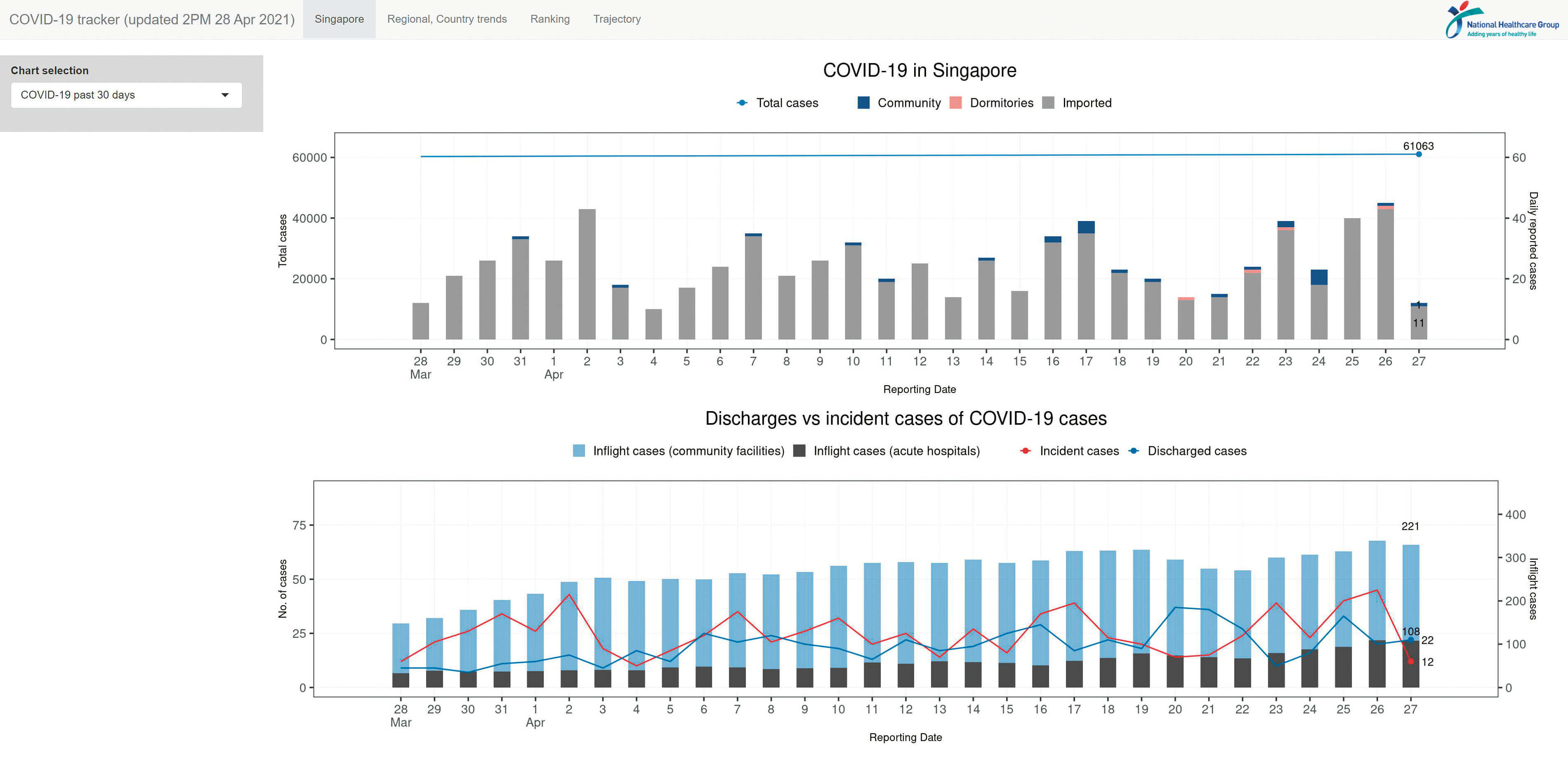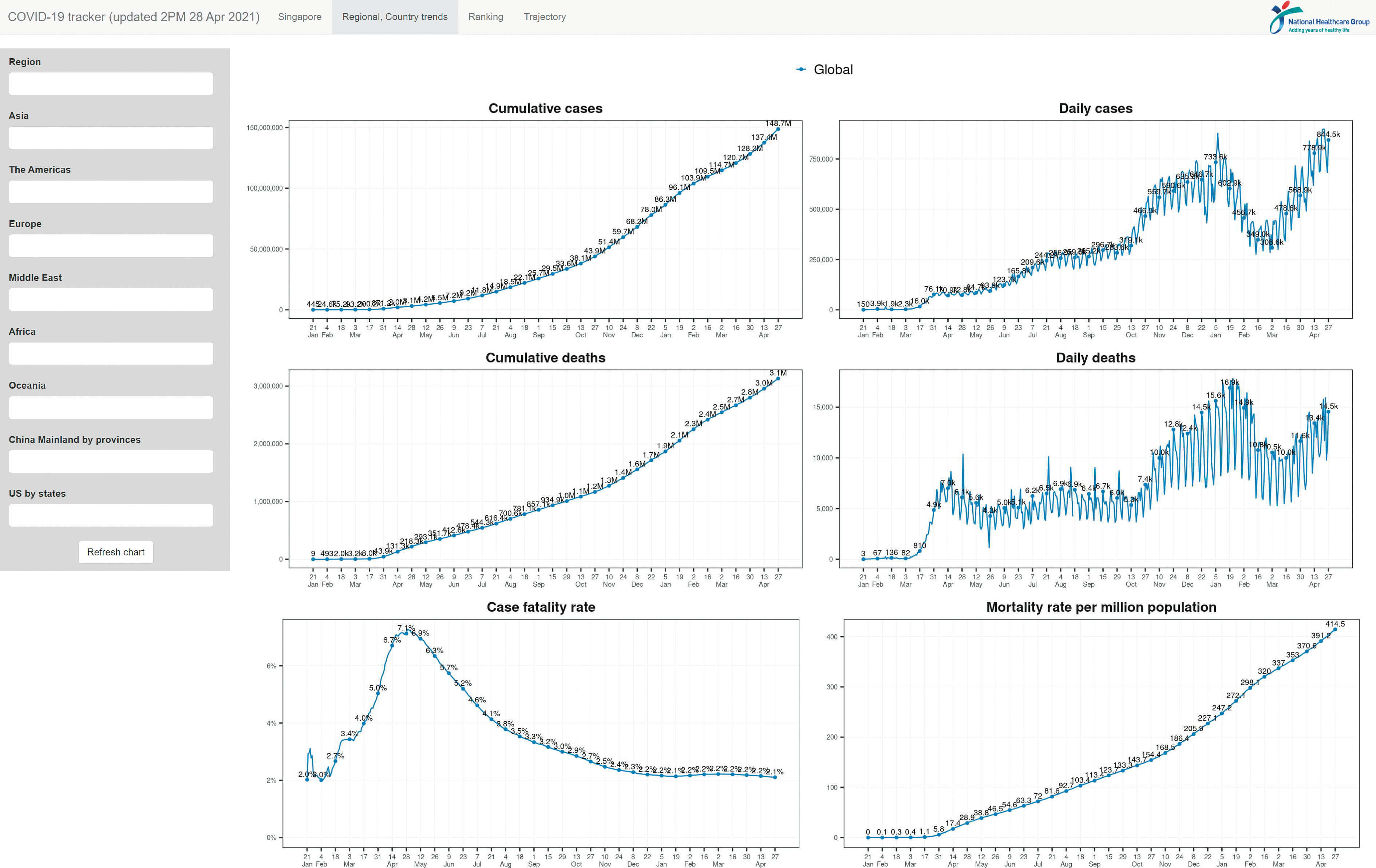HSOR COVID-19 TRACKER

Since January 2020, HSOR monitored the COVID-19 situation internationally and locally. Information was collated from multiple sources and summarised into regular epidemiology reports. Daily updates, comprising the latest local and global news of the disease, were presented as an interactive dashboard.
The local update covered daily epidemic curves and a detailed breakdown of cases stratified by different factors, e.g., community, dormitories, and imported; Singapore Citizens, Permanent Residents, work- and long-term visit pass holders. It also provided a comparison of weekly numbers of acute respiratory infections (ARI) and dengue surveillance. All local data was extracted from the Ministry of Health (MOH) COVID-19 Situation Reports.
The global update consisted of daily epidemic curves and trajectories by regions and countries. It tracked cumulative and daily cases, cumulative and daily deaths, case fatality rates, and mortality rates per million population. The global update also comprised a table that ranked the severity of the COVID-19 situation in countries around the world. This allowed the classification of regions and countries by different indicators, e.g., cumulative cases, daily cases, case fatality rates, latest doubling times, etc. The global update derived data mainly from Johns Hopkins University, and was supplemented by information from Worldometers.
MATCHING OF MIGRANT WORKER DORMITORIES TO PUBLIC HEALTH PREPAREDNESS CLINICS (PHPCS)

As part of planning of COVID-19 operations, it was necessary to organise the medical needs of unwell migrant workers efficiently. They were housed in dormitories of varying sizes at different locations across Singapore, and specific Public Healthcare Preparedness Clinics (PHPCs) were appointed to take care of their medical needs. The migrant workers were usually sent to the nearest PHPCs if they required care.
However, planning was needed to ensure these clinics were not overwhelmed. In April 2020, at the height of the outbreak in the dormitories, HSOR was asked to study the adequacy of coverage of some 300 PHPCs for about 1000 dormitories. A mathematical model based on Mixed Integer Programming (MIP) was developed for this purpose using IBM ILOG CPLEX Optimization Studio. Using this model, all dormitories were assigned to the nearest PHPCs with the condition that no PHPC needed to manage more than a given number of workers. Some larger dormitories needed more than one PHPC to cover their medical needs. The results from this project were shared with the Joint Task Force, comprising MOH, Ministry of Manpower (MOM), and Ministry of Defence (MINDEF). This helped facilitate their operations and planning during the outbreak in the dormitories.


